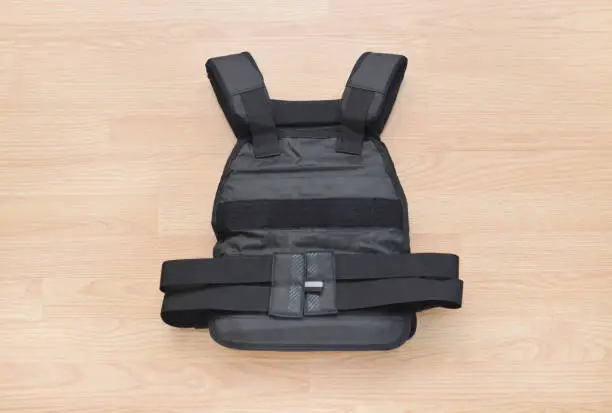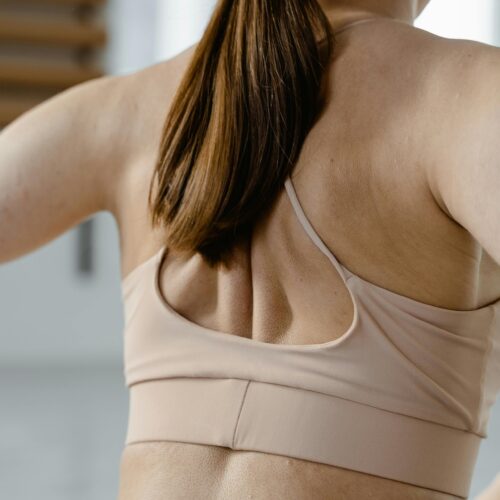
The Science Behind Weighted Vest Training: How It Affects Your Body
Key Takeaways
-
Extra Weight = Extra Strength: Wearing a weighted vest makes your muscles work harder during exercise, leading to increased strength and power gains over time. It’s like turning bodyweight exercises into weighted exercises for added resistance.
-
Endurance Booster: Training with a vest can improve your stamina. Athletes have seen better running economy and speed after incorporating weighted vest drills, and everyday users find they can go longer or faster once they adapt to the added weight.
-
Higher Calorie Burn: A weighted vest elevates your heart rate and oxygen consumption, meaning you torch more calories for the same workout. This can aid in weight loss and fat burning, especially when combined with a proper diet.
-
Bone Density Benefits: The added load from a vest provides healthy stress to your bones, helping to maintain or even increase bone density with long-term use. It’s a convenient way to engage in weight-bearing exercise critical for bone health.
-
Heart and Lungs Work Harder: Vest training makes any cardio work more intense, strengthening your cardiovascular system. You effectively improve heart and lung fitness by making them handle the extra demand of a heavier body during exercise.
-
Hormonal Kick: High-intensity vest workouts can trigger beneficial hormonal responses – expect boosts in growth hormone and testosterone that help with muscle building and fat metabolism. Essentially, you get similar endocrine benefits as heavy resistance training.
-
Use with Care: Weighted vests are safe when used properly – start light, progress gradually, and avoid excessive impact early on. There’s little evidence of increased injury risk in healthy individuals, but improper use (too heavy, too fast) can strain joints or cause back soreness. Listen to your body and prioritize good form.
Weighted vest training is gaining popularity, from CrossFitters doing the infamous “Murph” workout with a 20 lb vest to hikers, runners, and even grandparents trying to strengthen their bones. In everyday terms, a weighted vest turns your body into a living “resistance machine.” By wearing a vest loaded with extra weight, you force your muscles, heart, and bones to work overtime – simulating the challenge of moving in a heavier body (think training in higher gravity!). The result? Greater strength and stamina gains, more calories burned, and even potential boosts in bone and hormonal health.
In this article, we’ll take an expert-friend look at the full-body impact of weighted vest training. We’ll break down the science-backed benefits – from building strength and endurance to aiding weight loss and bone density, plus how it affects your heart, hormones, and injury risk. Along the way, you’ll get real-world tips on using vests safely and effectively (no crazy science jargon, promise!). Let’s dive in and see what really happens when you strap on that vest.
Boosting Strength and Muscle Power
Weighted vests increase resistance during exercise, effectively turning bodyweight movements into strength training. This added load forces muscles to work harder, leading to increased strength and muscle development, similar to lifting heavier weights. Research supports this, showing significant gains in leg strength and power, even in older populations. Athletes use vests to enhance force generation and improve functional strength, as the added weight engages core and stabilizer muscles more effectively than static gym machines. By consistently overloading muscles, weighted vests can transform everyday movements into powerful strength-building exercises.
Improving Endurance and Stamina
Weighted vests enhance both muscular and cardiovascular endurance by increasing the demands of exercise. Training with added weight makes your body work harder, leading to improved unweighted performance. For instance, runners using vests can increase speed and efficiency. For general fitness, consistent weighted vest use, even for walking or bodyweight exercises, pushes your heart, lungs, and muscles, improving oxygen delivery and overall stamina. Gradual and consistent overload is key, allowing your body to adapt to tougher conditions and making standard activities feel easier.
Enhanced Weight Loss and Calorie Burn
Weighted vests can assist with weight loss by increasing calorie expenditure during exercise, as your body works harder to move the added load. Research shows even a 10% bodyweight vest can noticeably boost workout intensity and calorie burn. While not a standalone fat-melting solution, and some studies show mixed direct weight loss results, weighted vests may help maintain metabolic rate and prevent weight regain after dieting, possibly by signaling the body it’s heavier. Practically, adding a vest to workouts increases calorie burn, contributing to greater fat loss over time when combined with a balanced diet.
Bone Density and Skeletal Strength
Bones strengthen in response to weight-bearing stress, similar to muscles. A weighted vest acts as a portable tool to increase this stress during everyday movements, signaling the body to fortify bones and increase their density. This is particularly beneficial for populations at risk of bone loss, such as postmenopausal women, with research showing long-term weighted vest exercise can prevent or even improve hip bone density and guard against osteoporosis. The mechanical loading from the vest prompts bones to lay down more mineral deposits. Even for younger individuals, a vest can provide healthy bone stimulation, and it’s often recommended for proactive osteoporosis prevention, offering a hands-free and evenly distributed alternative to holding weights. However, starting with a modest weight and gradually increasing impact is crucial for safety and effectiveness.
Cardiovascular Conditioning and Heart Health
Weighted vests elevate the intensity of cardiovascular workouts by increasing the load on your body, forcing your heart and lungs to work harder to deliver oxygen. Studies show vests significantly raise heart rate and oxygen consumption. This increased demand, over time, leads to a stronger heart muscle, improved circulation, and better lung capacity, essentially “turbocharging” your aerobic fitness. Regular vest training can lower resting heart rate and improve endurance. For general health, incorporating a vest into low-impact cardio like walking can achieve a similar heart rate to light jogging, offering a time-efficient way to improve heart health while also benefiting bone density. Always start gradually and monitor your body’s response.
Hormonal Responses to Weighted Vest Training
Intense exercise doesn’t just strengthen muscles and heart – it also shakes up your body’s hormonal cocktail (in a good way!). When you engage in weighted vest training, you’re essentially doing higher-intensity or higher-resistance work than usual, which can trigger the release of certain hormones that help your body adapt and improve.
One key player is growth hormone (GH). This hormone is released by your pituitary gland, especially during high-intensity exercise and short recovery periods. GH has a host of benefits: it helps with muscle repair and growth, stimulates fat breakdown, and supports bone tissue. Research shows that acute exercise can cause a spike in growth hormone levels, and the more intense the exercise, the bigger the GH surge. For example, studies have noted that a hard workout can temporarily increase GH release in an intensity-dependent manner – meaning if you push your body harder (like by adding a weighted vest), you might get a larger GH response. This is part of why high-intensity training is associated with fat loss, especially visceral fat – GH helps mobilize fat as fuel. Weighted vest workouts, which make your usual exercise more intense, likely amplify this natural GH burst compared to the same exercise unweighted.
Another important hormone is testosterone – often dubbed the “strength hormone”. Both men and women produce testosterone (men in higher amounts), and it’s crucial for building muscle, improving recovery, and even boosting mood and energy. The good news: exercise can cause a short-term increase in testosterone levels, and weighted vest training falls into that category since it’s essentially resistance exercise. In fact, it’s well documented that resistance exercises (like lifting weights or doing bodyweight drills with added load) trigger acute testosterone elevations in both sexes, contributing to better muscle adaptation over time. So, when you’re knocking out squats or push-ups with a weighted vest, you’re not only working the muscle mechanically – you’re also nudging your endocrine system to secrete more testosterone and growth factors to support that work. Over months of training, these repeated hormonal boosts can aid in increasing muscle size and strength.
We should also mention cortisol, the stress hormone. Any intense exercise will raise cortisol temporarily – it’s part of the body’s fight-or-flight response to help mobilize energy. Weighted vest training, being a tougher workout, can lead to a higher acute cortisol release. This isn’t necessarily bad – cortisol helps break down glycogen and fat to fuel your activity. The key is that cortisol should come back down and not stay chronically elevated. Proper recovery, nutrition, and not overtraining ensure that these hormonal spikes remain beneficial. In fact, some studies on heavy resistance training find that while cortisol spikes during the workout, it can lead to a favorable testosterone-to-cortisol ratio afterwards, signaling an environment conducive to muscle building. The takeaway: weighted vest workouts will transiently jack up your stress hormones, but this is part of the adaptive process. As long as you allow rest days and manage overall stress, the net effect is positive – you get the anabolic (building) hormone pulses without long-term hormonal imbalance.
Real-World Weighted Vest Applications & Tips
-
Walking & Hiking: Turn walks into moderate cardio, boosting intensity and bone health. Start on flat ground, focus on posture.
-
Bodyweight Workouts: Enhance push-ups, squats, etc., to break plateaus. Maintain good form; reduce weight if form suffers.
-
Running & Sprinting: Use a light vest for power (sprinters) or conditioning (endurance). Keep weight low (5-10% body weight) due to high impact.
-
High-Intensity Intervals & Circuits: Increase intensity and heart rate. Be cautious with jumping moves, focus on soft landings.
-
Daily Chores & NEAT Boosting: Burn more calories during daily tasks. Use a very light, comfortable vest; take breaks if strained.
-
Sports Training: Improve power and speed for drills (e.g., basketball, martial arts). Vest should be secure; not for actual games.
Practical Tips for Weighted Vest Use
-
Fit & Comfort: Choose a well-fitting vest with even weight distribution to prevent chafing and maintain balance.
-
Weight Selection: Start light (e.g., 5% of body weight) and gradually increase.
-
Progression: Increase weight or duration/intensity, not both simultaneously.
-
Listen to Your Body: Reduce weight or stop if you feel pain. Consistency over time yields benefits.
By weaving a weighted vest into your routine thoughtfully, you can supercharge everyday exercises. It’s somewhat like doing altitude training, but for weight – you simulate a tougher environment so that in normal conditions you thrive. Whether your goal is to build muscle, increase endurance, burn extra calories, or strengthen your bones, a weighted vest can be your secret weapon. Just remember, even superheroes take their weighted capes off now and then – recovery and moderation are part of the program!
Summing It Up:
Weighted vest training offers a versatile and effective way to elevate your fitness. By adding resistance to nearly any movement, vests significantly boost strength, endurance, and calorie expenditure, contributing to muscle growth and aiding weight loss. Beyond the visible benefits, they provide crucial weight-bearing stress for improved bone density and challenge your cardiovascular system for enhanced heart and lung health. Even your body’s hormonal response can be positively influenced, fostering an environment conducive to muscle building and fat metabolism.
While powerful, it’s essential to use weighted vests thoughtfully. Start with a manageable weight, prioritize proper form, and gradually increase intensity. Listen to your body and allow for adequate recovery. Whether you’re an athlete seeking an edge, a fitness enthusiast aiming for new plateaus, or simply looking to enhance daily activity and long-term health, a weighted vest can be an invaluable tool in your fitness arsenal. Incorporate it wisely, and you’ll unlock a new level of training that helps you thrive in all aspects of your physical well-being.
Frequently Asked Questions:
How heavy should my weighted vest be?
Start with 5–10% of your body weight. For dynamic exercises like running, stick to around 10%. You can go heavier for static exercises like pull-ups or squats, but always prioritize proper form.
Will wearing a weighted vest all day help me get in shape faster?
Wearing a heavy vest for long periods is generally not recommended due to fatigue, poor posture, or back pain. Use it for targeted workouts. A light vest for daily chores is fine if comfortable; start short and take breaks. The vest is a training tool, not a permanent accessory.
Is it safe to run or jog with a weighted vest?
Yes, running with a weighted vest can be beneficial if done safely and with a base level of fitness. Keep the weight reasonable (5-10% of body weight max) to avoid excessive joint impact. Start with power walking or short jogs to adapt. Maintain good running form. It’s great for building power and endurance, especially for hill sprints. If you have joint issues, opt for walking or low-impact exercises with the vest instead.
Can a weighted vest help me lose weight faster?
A weighted vest can boost calorie burn during exercise, aiding weight loss by increasing workout intensity. However, it’s not a magic solution; weight loss still depends on calorie deficit. Use it to enhance training and metabolism, but prioritize a balanced diet for best results.
Does weighted vest training build muscle mass or just strength/endurance?
A weighted vest can build both muscle and functional strength. It adds resistance to bodyweight exercises, stimulating muscle growth. While serious mass might require traditional weights, a vest is excellent for lean muscle and endurance. Adjust weight and reps for specific goals. Remember protein and recovery are crucial for muscle growth.
Are weighted vests good for bone health if I’m younger?
Yes, weighted vests benefit bone health at any age by stressing bones, stimulating formation, and maintaining density. For younger individuals, it’s an investment in future bone strength. It also improves balance, indirectly preventing fall-related injuries. Use vests gradually and wisely.
What’s the best way to incorporate weighted vest training into my routine?
The best frequency depends on your goals and consistency. Start with one vest workout per week and gradually increase to two or three. You can integrate it into strength training (e.g., specific vest exercises), cardio (walks, jogs), or dedicate full “vest days.” Avoid daily high-intensity use; prioritize quality over quantity and allow recovery. The key is to find what works for you within your overall fitness routine.






